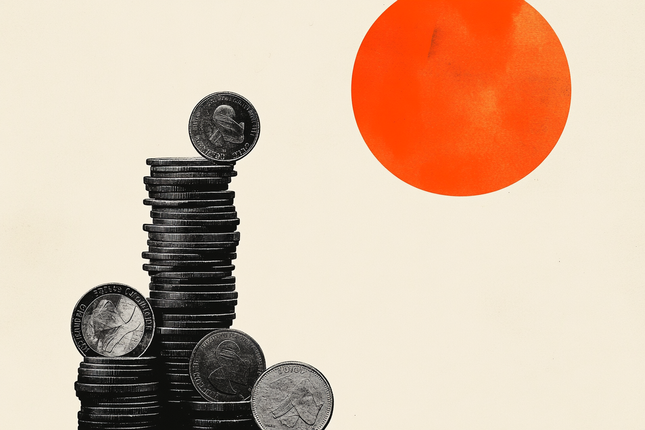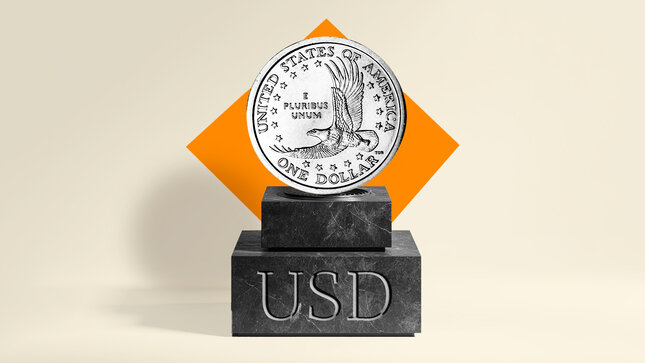USD/CAD Exchange rate
Editors’ Picks

EUR/USD Price Annual Forecast: Growth to displace central banks from the limelight in 2026 Premium
What a year! Donald Trump’s return to the United States (US) Presidency was no doubt what led financial markets throughout 2025. His not-always-unexpected or surprising decisions shaped investors’ sentiment, or better said, unprecedented uncertainty.

Gold Price Annual Forecast: 2026 could see new record-highs but a 2025-like rally is unlikely Premium
Gold hit multiple new record highs throughout 2025. Trade-war fears, geopolitical instability and monetary easing in major economies were the main drivers behind Gold’s rally.

GBP/USD Price Annual Forecast: Will 2026 be another bullish year for Pound Sterling? Premium
Having wrapped up 2025 on a positive note, the Pound Sterling (GBP) eyes another meaningful and upbeat year against the US Dollar (USD) at the start of 2026.

US Dollar Price Annual Forecast: 2026 set to be a year of transition, not capitulation Premium
The US Dollar (USD) enters the new year at a crossroads. After several years of sustained strength driven by US growth outperformance, aggressive Federal Reserve (Fed) tightening, and recurrent episodes of global risk aversion, the conditions that underpinned broad-based USD appreciation are beginning to erode, but not collapse.

Bitcoin Price Annual Forecast: BTC holds long-term bullish structure heading into 2026
Bitcoin (BTC) is wrapping up 2025 as one of its most eventful years, defined by unprecedented institutional participation, major regulatory developments, and extreme price volatility.
Majors
Cryptocurrencies
Signatures
USD/CAD
The USD/CAD represents how many Canadian Dollars (the quote currency) are needed to purchase one US Dollar (the base currency). The nickname “Loonie” originates from the Gold-colored Canadian one-dollar coin introduced in 1987 and produced by the Royal Canadian Mint in Winnipeg.
The coin reverse features a common loon, a bird found throughout Canada, while the obverse displays the portrait of Queen Elizabeth II, the nation's former head of state.
HISTORIC HIGHS AND LOWS FOR USD/CAD
- All-time records: Max: 1.6192 on 18/01/2002 – Min: 0.9059 on 01/11/2017
- Last 5 years: Max: 1.4668 on 19/03/2020 – Min: 1.2007 on 01/06/2021
* Data as of December 2024
USD/CAD 2025 FORECAST
In the USD/CAD 2025 Forecast, FXStreet analyst Joshua Gibson suggests uncertainty and risk-off sentiment could strengthen the US Dollar (USD) early in 2025, while the Canadian Dollar (CAD) is expected to weaken in the first quarter. However, CAD investors may reassess prospects as the year progresses, focusing on the Federal Reserve (Fed)- Bank of Canada (BoC) policy dynamics.
From a technical point of view, USD/CAD could face a technical ceiling near the 1.4400 level after the Canadian Dollar's sharp 8.5% decline in 2024 sent the pair to 56-month highs. However, technical indicators like the MACD suggest caution, as short positions may only become viable once clear sell signals emerge, likely during the first quarter.
INFLUENTIAL CURRENCIES FOR USD/CAD
The Japanese Yen (JPY) and the Euro (EUR). Another important group of influent pairs includes: EUR/USD, GBP/USD, USD/JPY, AUD/USD, USD/CHF and NZD/USD.
MOST INFLUENTIAL ORGANIZATIONS FOR USD/CAD
- The Bank of Canada (BoC) is the nation's central bank. Its principal role, as defined in the Bank of Canada Act, is "to promote the economic and financial welfare of Canada." The BoC sets interest rates and manages monetary policy at eight scheduled meetings a year and ad hoc emergency meetings that are held as required. The BoC’s primary mandate is to maintain price stability, which means keeping inflation at between 1-3%. Its main tool for achieving this is by raising or lowering interest rates. Relatively high interest rates will usually result in a stronger Canadian Dollar (CAD) and vice versa. Other tools used include quantitative easing and tightening.
- The Federal Reserve (Fed) is the central bank of the United States (US) and it has two main targets: to maintain the unemployment rate at its lowest possible levels and to keep inflation around 2%. The Federal Reserve System's structure is composed of the presidentially appointed Board of Governors and the partially appointed Federal Open Market Committee (FOMC). The FOMC organizes eight scheduled meetings in a year to review economic and financial conditions. It also determines the appropriate stance of monetary policy and assesses the risks to its long-run goals of price stability and sustainable economic growth. The FOMC Minutes, which are released by the Board of Governors of the Federal Reserve weeks after the latest meeting, are a guide to the future US interest-rate policy.